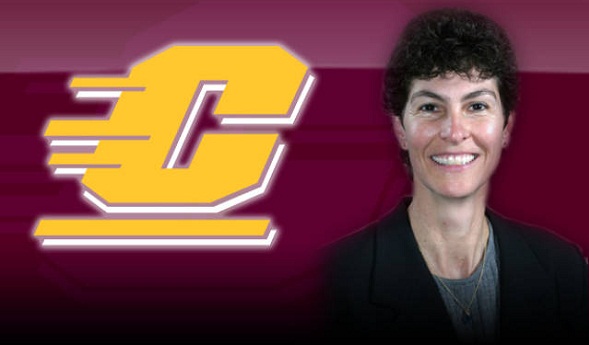
Participation Fee Numbers Hold Steady
June 27, 2012
Although the use of participation fees to help fund interscholastic athletics in Michigan high schools has doubled during the last nine years, the percentage of schools assessing them has held steady over the last two, according to surveys taken by the Michigan High School Athletic Association of its member institutions.
The most recently completed survey indicates that of 514 member schools participating, 260 schools – 50.5 percent – charged participation fees during the 2011-12 school year. In the 2010-11 survey, fees were being used at 50.4 percent of schools participating.
There were 763 senior high schools in the MHSAA membership this school year – the survey generated a response rate of 68 percent. This was the ninth survey of schools since the 2003-04, when members reported that fees were being used in 24 percent of schools.
The most recent survey also showed that fees incurred by students who paid once for an entire year of participation increased slightly from 2010-11 to 2011-12 – although the maximum fee per family decreased slightly.
The most popular method of assessing participation fees continues to be a payment for each sport an athlete goes out for, used by 41.5 percent of schools in 2011-12. That median fee among schools in the survey has increased only $5, to $75, since 2009-10.
A standardized annual fee per student was used by 24.5 percent of schools in the past year. Since Fall 2003, that fee has increased from $75 to $120 – a 60 percent increase – with the fee increasing $20 per athlete from 2010-11 to 2011-12.
Beginning with the 2004-05 survey, schools were asked in the survey if they had a cap on what individual student-athletes and families could be charged. Caps on student fees have been used by the majority of schools, but that number has dropped from 71.3 percent in 2004-05 to 55 percent in 2011-12. However, the number of schools instituting a cap on what a family pays has increased from 41 percent having a limit in 2004-05 to 49 percent in 2011-12.
Other data from the 2011-12 survey shows 64.5 percent of schools with participation fees have some kind of fee reduction or waiver program in place based on existing programs for subsidized lunch and milk (down from 68 percent in 2010-11); that 14 percent of schools using fees report a drop in participation; and that slightly more than one percent of schools report losing students to other school districts because they are charging fees. Five percent of schools not assessing fees in 2011-12 report transfers to their districts because of the absence of fees. Also, seven percent of schools not assessing fees had done so previously.
The survey for 2011-12 and surveys from previous years can be found on the MHSAA Website by clicking on Schools – Administrators – Pay-To-Play Resources.

Lessons Learned Keep Paying Off
February 8, 2013
By Terri Finch Hamilton
Reprinted with permission of CMUChippewas.com
Gina Mazzolini's parents taught her to be a good person first, a good student second, and a good athlete after that. But Mazzolini says her involvement in sports at CMU taught her things that went way beyond the classroom.
"At Central, I learned women are just as good as men -- or better," says Mazzolini, assistant director at the Michigan High School Athletic Association. "I learned that if we put our minds to it, we can do anything."
A star athlete in volleyball and basketball at CMU from 1974 to 1978, Mazzolini says college sports helped her soar after the limitations for girls in high school sports in the early 1970s.
"In high school, women were always taking the back seat to men," says Mazzolini, 57. "I didn't see women in leadership positions in high school. Girls couldn't use the weight room -- we had to sneak in, then we'd get kicked out. They'd look at me and say, 'Why would you want to lift weights?'
"When the guys were done with the gym, then we could use it."
As an athlete at St. Johns High School, Mazzolini was just starting to compete competitively, she says. She won the school's first ever female athlete of the year award.
"Then I went to Central Michigan, and my teammates were all the best kids from their high school teams. Suddenly, everybody was good. And everybody we played against was good."
It was eye opening, she says.
"You learn a lot about yourself," she says. "If you can survive a practice, if you can survive playing Michigan State, you get confidence. I realized I was good. I learned how to be competitive, in a good way."
In basketball, she led the Chippewas in scoring and rebounding three straight seasons - averaging in double figures in both categories. After graduating from CMU, Mazzolini went on to teach and coach at the high school and college levels. She was inducted into the CMU Athletic Hall of Fame in 1992.
A few years later, Mazzolini received the 2009-10 Women In Sports Leadership Award by the Representative Council of the MHSAA.
So much of what she learned on the college volleyball and basketball courts prepared her for later success, Mazzolini says.
"In athletics, you can't worry about what just happened," she says. "You control your emotions, you take a deep breath, you move forward."
Good advice on any day, she says.
"You learn that you don't always win, and you learn to take defeat gracefully," she says. "Later, in your business life, you're not going to win everything, either. Sports teaches you how to deal with setbacks, how to work hard and rearrange your goals so that you do better next time.
"You learn if you work together, you can achieve amazing things."
CMUChippewas.com is running a series of stories to celebrate the 40th anniversary of Title IX legislation. Click to see more of the series.

